5,5-dimethylhexane-2,4-dione
Modify Date: 2025-08-25 21:14:55

5,5-dimethylhexane-2,4-dione structure
|
Common Name | 5,5-dimethylhexane-2,4-dione | ||
|---|---|---|---|---|
| CAS Number | 7307-04-2 | Molecular Weight | 142.19600 | |
| Density | 0.9412 | Boiling Point | 165ºC | |
| Molecular Formula | C8H14O2 | Melting Point | N/A | |
| MSDS | Chinese USA | Flash Point | 57ºC | |
| Symbol |


GHS02, GHS07 |
Signal Word | Warning | |
| Name | 2,2-dimethyl-3,5-hexanedione |
|---|---|
| Synonym | More Synonyms |
| Density | 0.9412 |
|---|---|
| Boiling Point | 165ºC |
| Molecular Formula | C8H14O2 |
| Molecular Weight | 142.19600 |
| Flash Point | 57ºC |
| Exact Mass | 142.09900 |
| PSA | 34.14000 |
| LogP | 1.58070 |
| Index of Refraction | 1.46 |
|
Section 1: Product Identification Chemical Name:2,2-Dimethyl-3,5-hexanedione, min. 97% CAS Registry Number:7307-04-2 Formula:(CH3)3CC(O)CH2C(O)CH3 EINECS Number:230-760-0 Chemical Family:organic compound Synonym:5,5-dimethylhexane-2,4-dione
Section 2: Composition and Information on Ingredients IngredientCAS NumberPercentACGIH (TWA)OSHA (PEL) Title Compound7307-04-2100%no datano data Section 3: Hazards Identification Emergency Overview:Irritating to skin, eyes and mucous membranes. May be harmful if swallowed. Primary Routes of Exposure:Ingestion ,inhalation, skin, eyes Eye Contact:Irritating to eyes. May cause redness and pain. Skin Contact:Irritating to skin. May cause itching and redness. Inhalation:Irritating to the nose, mucous membranes and respiratory tract. Ingestion:No specific information is available on the physiological effects of ingestion. Acute Health Affects:Irritating to skin, eyes, and mucous membranes. Chronic Health Affects:No information available on long-term chronic effects. NTP:No IARC:No OSHA:No SECTION 4: First Aid Measures Immediately flush the eyes with copious amounts of water for at least 10-15 minutes. A victim may need Eye Exposure: assistance in keeping their eye lids open. Get immediate medical attention. Wash the affected area with water. Remove contaminated clothes if necessary. Seek medical assistance if Skin Exposure: irritation persists. Remove the victim to fresh air. Closely monitor the victim for signs of respiratory problems, such as difficulty Inhalation: in breathing, coughing, wheezing, or pain. In such cases seek immediate medical assistance. Seek medical attention immediately. Keep the victim calm. Give the victim water (only if conscious). Induce Ingestion: vomiting only if directed by medical personnel. SECTION 5: Fire Fighting Measures Flash Point:not applicable Autoignition Temperature:no data Explosion Limits:no data Extinguishing Medium:dry chemical, carbon dioxide, or foam. If this product is involved in a fire, fire fighters should be equipped with a NIOSH approved positive pressure Special Fire Fighting Procedures: self-contained breathing apparatus and full protective clothing. Hazardous Combustion andIf involved in a fire this material may release toxic and corrosive fumes. Decomposion Products: Unusual Fire or Explosion Hazards: No unusual fire or explosion hazards. SECTION 6: Accidental Release Measures Small spills can be mixed with vermiculite, sodium carbonate or other suitable non combustible adsorbent and Spill and Leak Procedures: swept up. SECTION 7: Handling and Storage Handling and Storage:Store the material in a tightly sealed container in a cool, dry place. SECTION 8: Exposure Controls and Personal Protection Eye Protection:Always wear approved safety glasses when handling a chemical substance in the laboratory. Skin Protection:Wear appropriate chemical resistant gloves and clothing. Ventilation:If possible, handle the material in an efficient fume hood. If ventilation is not available a respirator should be worn. The use of respirators requires a Respirator Respirator: Protection Program to be in compliance with 29 CFR 1910.134. Ventilation:If possible, handle the material in an efficient fume hood. Additional Protection:No additional protection required. SECTION 9: Physical and Chemical Properties Color and Form:colorless liquid Molecular Weight:142.2 Melting Point:no data Boiling Point:no data Vapor Pressure:no data Specific Gravity:no data Odor:not determined Solubility in Water:insoluble SECTION 10: Stability and Reactivity Stability:air and moisture stable Hazardous Polymerization:no hazardous polymerization Conditions to Avoid:none Incompatibility:oxidizing agents Decomposition Products:carbon monoxide, carbon dioxide and organic fumes. SECTION 11: Toxicological Information RTECS Data:No information available in the RTECS files. Carcinogenic Effects:no data Mutagenic Effects:no data Tetratogenic Effects:no data SECTION 12: Ecological Information Ecological Information:No information available SECTION 13: Disposal Considerations Disposal:Dispose of according to federal, state, and local regulations. SECTION 14: Transportation Shipping Name (CFR):Non-hazardous Hazard Class (CFR):NA Additional Hazard Class (CFR):NA Packaging Group (CFR):NA UN ID Number (CFR):NA Shipping Name (IATA):Non-hazardous Hazard Class (IATA):NA Additional Hazard Class (IATA):NA Packaging Group (IATA):NA UN ID Number (IATA):NA SECTION 15: Regulatory Information TSCA:Not listed in the TSCA inventory. SARA (Title 313):Title compound not listed. Second Ingredient:none SECTION 16 - ADDITIONAL INFORMATION N/A |
| Symbol |


GHS02, GHS07 |
|---|---|
| Signal Word | Warning |
| Hazard Statements | H226-H302-H319 |
| Precautionary Statements | P305 + P351 + P338 |
| Personal Protective Equipment | Eyeshields;Faceshields;full-face respirator (US);Gloves;multi-purpose combination respirator cartridge (US);type ABEK (EN14387) respirator filter |
| Hazard Codes | Xn |
| Risk Phrases | 10-22 |
| Safety Phrases | S23-S24/25 |
| RIDADR | UN 1224 |
| Packaging Group | III |
| Precursor 10 | |
|---|---|
| DownStream 9 | |
| MFCD00142767 |
| 5,5-dimethylhexane-2,4-dione |
| EINECS 230-760-0 |
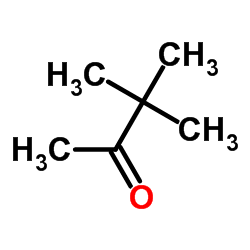 CAS#:75-97-8
CAS#:75-97-8 CAS#:141-78-6
CAS#:141-78-6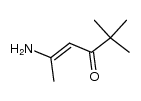 CAS#:33663-62-6
CAS#:33663-62-6 CAS#:108-24-7
CAS#:108-24-7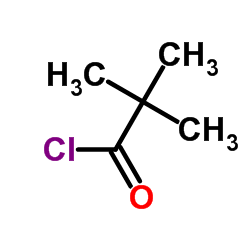 CAS#:3282-30-2
CAS#:3282-30-2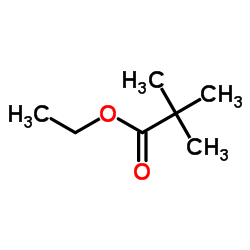 CAS#:3938-95-2
CAS#:3938-95-2 CAS#:67-64-1
CAS#:67-64-1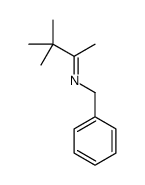 CAS#:92310-74-2
CAS#:92310-74-2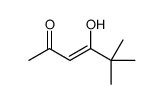 CAS#:59892-35-2
CAS#:59892-35-2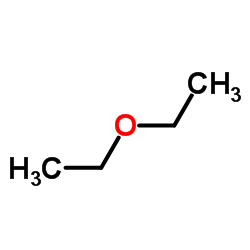 CAS#:60-29-7
CAS#:60-29-7 CAS#:75-98-9
CAS#:75-98-9 CAS#:64-19-7
CAS#:64-19-7 CAS#:108505-10-8
CAS#:108505-10-8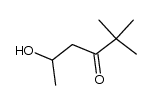 CAS#:173343-33-4
CAS#:173343-33-4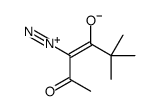 CAS#:29100-95-6
CAS#:29100-95-6